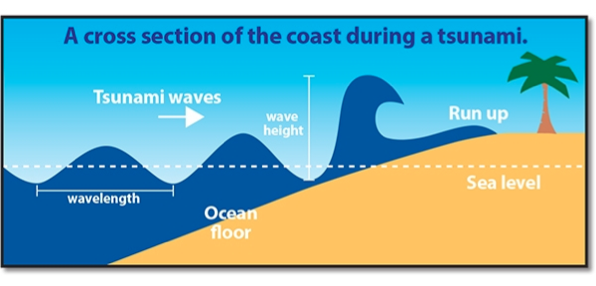Earthquakes
Measuring Earthquakes
A device called a seismometer measures the amount of ground shaking during an earthquake. This can detect all three types of waves.
http://study.com/academy/lesson/what-is-a-seismograph-definition-history-facts.html
What is the difference?
Intensity – measures the ground shaking. Often measured using the Mercalli Scale, based on observation of structural damage.
Magnitude- related to the amount of movement in the fault and the subsequent energy release. Magnitude is measured at the epicentre.
Secondary Hazards
__Liquefaction: __
Leads to the instability of buildings and potential collapse of buildings in the most severe cases.
It is the process by which water saturated material can lose it’s natural strength and behave more like a liquid.
In loose materials where water can fill in the spaces between each individual particle.
On land made up of silts and sands, can be a big problem on reclaimed land. This has been the case in San Francisco and Japan in the past.
In San Francisco, much of the liquefaction-related damage in the 1906 earthquake occurred in “reclaimed” areas that were once bay or marshland. These areas of filled or “made” land were typically filled with pumped or dredged sediment from the Bay floor. Although the extent of filled or “made” land was not as great as it is now, there were still large areas of San Francisco that suffered from poorly engineered fills and liquefaction of these fills.
Impacts of liquefaction:
Damage to buildings.
Damage to roads and bridges.
Damage to telecommunication and other services (gas, electricity and sewerage) which run through upper levels of the ground.
Delivery of aid is restricted.
Cost of rebuilding.
Landslides:
These are largely affected by the intensity (the level of shaking) experienced during an earthquake.
Landslides rarely occur when magnitudes are less than 4.
Tsunamis
Tsunamis can be linked to volcanoes, landslides, earthquakes and meteorites, but they are one of the most distinctive and well known secondary hazards of EARTHQUAKES.
Tsunamis are a result of a huge displacement of water. They are NOT linked to normal tidal processes and they are NOT tidal waves.
Tsunamis differ from normal waves in several ways:
Long wavelengths (150 – 1500km)
Low amplitude (offshore wave height – 0.5 to 5m)
Fast velocities (speed – up to 600 kph)
A series of waves, not just one on it’s own.
A result of seabed displacement. 
They span outwards across oceans – they travel across the world.